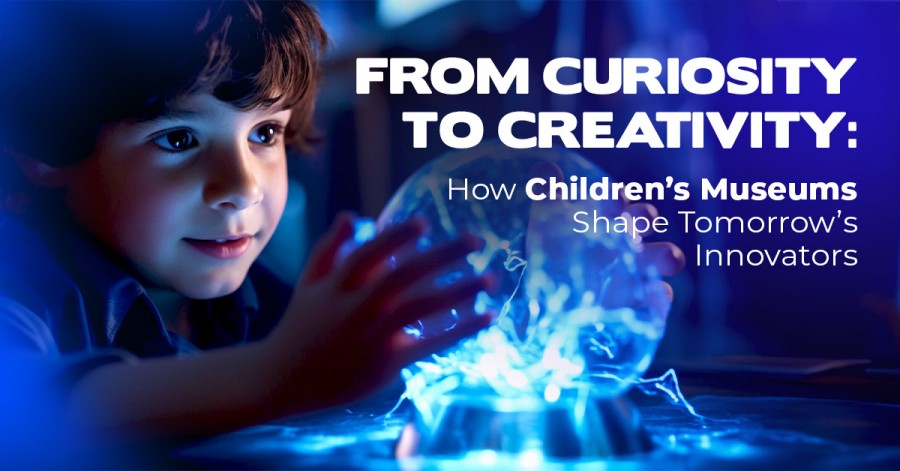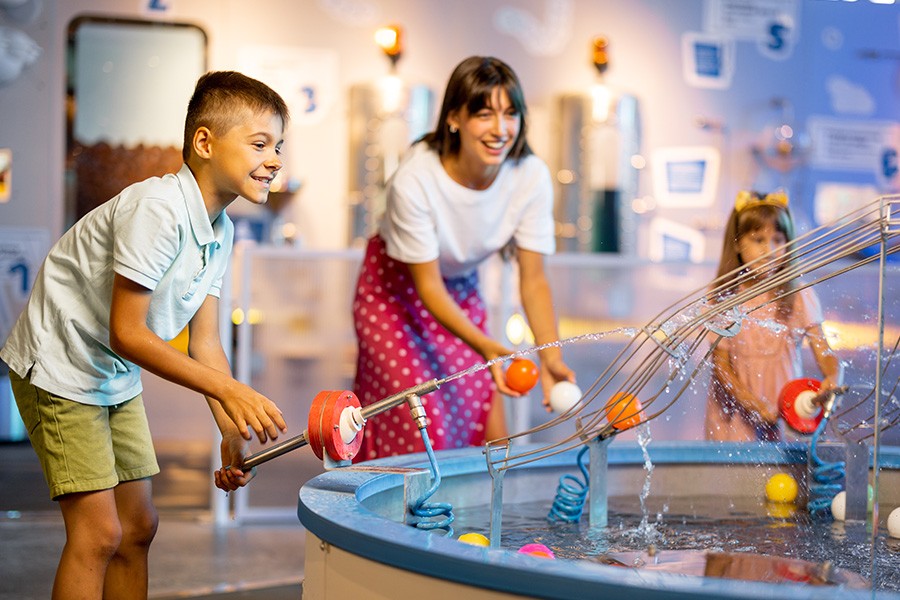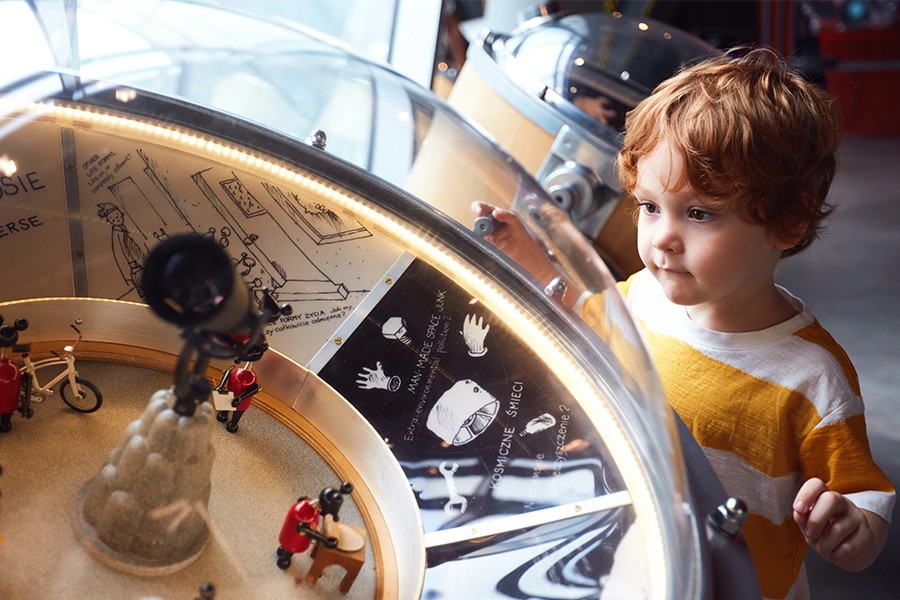How Children’s Museums Shape Tomorrow’s Innovators
Published 27 September 2024 at 13:42
Tickikids Blog Dubai > Education > How Children’s Museums Shape Tomorrow’s Innovators

Children’s museums are vibrant spaces where learning comes to life through play and hands-on exploration. Designed specifically for young explorers, these environments offer endless opportunities for children to discover, create, and imagine. Whether delving into science experiments, exploring history, or crafting works of art, children’s museums provide a welcoming and inclusive space where kids of all ages and abilities can learn and grow. In today’s fast-paced, complex world, children’s museums stand as essential havens where kids can explore, experiment, and learn alongside the supportive adults in their lives. Interactive exhibits of all kinds provide hands-on opportunities to uncover the mysteries of science, space, nature, and engineering, making every visit an adventure filled with discovery. In this article, TickiKids explores the unique role of children’s museums and the exciting experiences they offer for both kids and families.
Handpicked for Families: Top Kid-Friendly Museums in Dubai
Countless families flock to children’s museums for one-of-a-kind, hands-on experiences that bring learning to life. These vibrant spaces offer more than just entertainment; they provide opportunities for discovery, bonding, and creativity that transcend the ordinary. Families engage in interactive exhibits designed to spark curiosity and encourage children to explore the world around them in fun, meaningful ways. Whether it's through collaborative activities or immersive storytelling, these museums create a shared space where both kids and adults can learn, play, and grow together, fostering lifelong memories and a love for exploration. The combination of face-to-face interactions and dynamic learning environments ensures that every visit is a unique adventure, offering moments of joy and enlightenment for all ages!

Image Credit: Depositphotos
Inside the Wonder
Children's museums are full of exciting exhibits that make learning fun and engaging. Babies and toddlers can engage their senses by feeling various textures, stacking colourful blocks, crawling through tunnels, or chasing after bubbles. Or they can enjoy water play stations, where they splash and experiment with floating toys, or explore soft play areas filled with gentle climbing structures and foam shapes. Story-time sessions and sensory art activities like finger painting or moulding clay also offer creative outlets for little ones. These interactive environments encourage movement, curiosity, and discovery, providing endless opportunities for toddlers to explore and grow!
Many feature interactive stations where older kids can discover how everyday machines like pulleys, gears, and levers operate—allowing them to crank, turn, and lift objects as they explore the mechanics of motion. In science zones, children can experiment with magnets, test the principles of aerodynamics by designing and launching paper planes, or create simple circuits to light up a bulb.
Don't Miss Out: Our After-School Activities Guide
In other areas, young explorers might step into a mock space station, don astronaut gear, and learn about space travel while navigating a simulated spacecraft. They might even observe the stars and planets in a kid-friendly planetarium. Nature exhibits could let children dig for fossils like real palaeontologists, explore a mini rainforest environment, or interact with live insects and reptiles to learn about habitats and ecosystems.
Some museums have water play areas where kids can build dams, direct water currents. There may also be construction zones filled with giant foam blocks or real tools, where budding architects can design and build their own structures. Children could also explore human anatomy by walking through a giant model of the human body, learning how organs function, or testing their heart rates as part of an active wellness exhibit!
Kids can step aboard a 19th-century ship here, exploring cabins, raising and lowering sails, or signalling with semaphore flags. Nearby, kids might be building intricate underground tunnels with soft blocks, embodying the spirit of play and discovery. At children's museums, the golden rule is simple: touch, explore, and enjoy!
The History of Children’s Museums
The concept of children’s museums, which began in the United States, has since spread across the globe. The Brooklyn Children’s Museum, founded in 1899 by the Brooklyn Institute of Arts and Sciences, is widely recognised as the first museum specifically designed for children. Early children's museums were born out of the natural history museum tradition, with a focus on objects and hands-on discovery. Curators promoted a learning approach that empowered children to explore and understand the world by touching and examining artifacts. Visitors could compare the weight, texture, and composition of minerals, and learn to use tools like microscopes to inspect natural specimens.
More to Discover: Free Adventures with Kids in Dubai: Experiences Money Can’t Buy
These early institutions believed that learning should be fun and immersive, encouraging a deep connection with the natural world. Nature clubs, field trips, and live animal exhibits were common, with gallery instructors guiding children through interactive games on topics like animal classification, shells, and minerals. The focus was on learning by doing, making education a joyful and engaging experience for young visitors.
As the twentieth century progressed, children's museums gradually shifted from showcasing objects to offering more interactive and experiential exhibits. This evolution saw the rise of dedicated children's sections in larger museums, complete with hands-on activities tailored to engage young minds. Today, the emphasis is on play-based learning, where children are encouraged to explore, create, and interact with exhibits designed specifically for their development, making children's museums a unique blend of education and entertainment across the world.

Image Credit: Depositphotos
Children’s Zones in Museums
Special children’s zones in museums are a relatively new but increasingly important practice in world’s top cultural institutions. These dedicated spaces are designed to make museums more accessible, engaging, and educational for young visitors, offering hands-on, interactive exhibits that foster creativity and curiosity. In recent decades, many of the world’s leading museums have introduced specially designed children’s zones, helping cultivate a new generation of museum-goers who can engage with art, history, science, and culture in fun and meaningful ways. These special children’s zones are more than just play areas—they represent a shift in how museums are embracing younger audiences, making cultural learning more inclusive and engaging.
- In the Natural History Museum in London, the museum’s Investigate Centre is a kid-friendly area where children can become mini-scientists. They can examine real specimens, like fossils and insects, using microscopes and other tools, learning about the natural world in a tactile and engaging way.
- The Children’s Pavilion at the Louvre in Paris introduces kids to the world of art through interactive exhibits, allowing them to create their own masterpieces inspired by the great artists featured in the museum. This hands-on approach makes art accessible and fun for younger audiences.
- The Smithsonian’s National Museum of American History in Washington, D.C., features the Wonderplace—an interactive zone where toddlers and preschoolers can explore mini versions of real exhibits. Here, children can "work" in a pretend farm, climb through a treehouse, or engage in water play, all while learning about American history in a way designed just for them.
- The Science Museum in Tokyo has a Curiosity Field, a space where children are encouraged to solve puzzles, test scientific theories through fun experiments, and explore different scientific principles through play. This zone bridges the gap between education and entertainment, sparking a love of science from an early age.
- MOMA’s Art Lab in New York offers creative spaces where children can experiment with different mediums, such as sculpture, painting, and digital art. The space is designed to nurture artistic expression in young visitors, allowing them to learn about the artistic process by actively engaging in it.

Image Credit: The Museum of the Future
You May Also Like: How to Spot and Develop Talents in Children
The Museum of the Future
The Museum of the Future in Dubai is one of the most innovative museums in the world, offering a forward-thinking blend of technology, creativity, and imagination. Opened in 2022, this iconic museum is designed not only to showcase advancements in science and technology but to inspire visitors to envision the possibilities of tomorrow. A key feature of the Museum of the Future is its focus on making these concepts accessible to all ages, including young visitors.
The museum features interactive exhibits that allow children to explore futuristic ideas in a hands-on and engaging way. In its special children's zone, young explorers can embark on imaginative journeys, such as missions to outer space or diving into the mysteries of the deep ocean, all while learning about sustainability, robotics, and artificial intelligence. These immersive experiences are designed to spark curiosity and foster a sense of wonder about the future, blending learning with play in a way that captivates young minds.
Creating Lasting Memories
- To make your visit unforgettable, focus on creating moments that resonate with your child. Engage in the activities they love most, capture special moments with photos, and encourage them to talk about their favourite parts of the experience. These shared experiences will leave a lasting impression and provide cherished memories long after your visit.
- Plan your visit. For detailed information on hours, exhibits, and special events, it’s a good idea to call the museum or check their website before your visit. This way, you can make the most of your time there and ensure a smooth experience.
- Follow your child’s lead. Although it might be tempting to rush through all the exhibits to cover everything, your child will likely get more value from focusing on just a few. Quality over quantity often leads to a more meaningful experience, so let your child take the lead and explore at their own pace, spending time where their interest naturally flows.
- Encourage your child’s learning style. To support your child’s engagement, ask open-ended questions that prompt deeper thinking and exploration. Instead of questions that can be answered with "yes" or "no," try asking, "What do you think will happen next?" or "Why do you think that object works this way?" These types of questions encourage curiosity and help your child reflect on what they’re learning and experiencing.
More to Discover: A Complete Guide to Introducing Children to Music